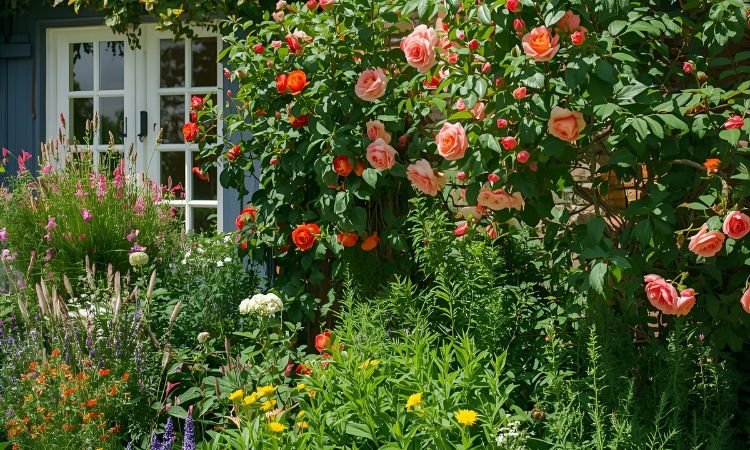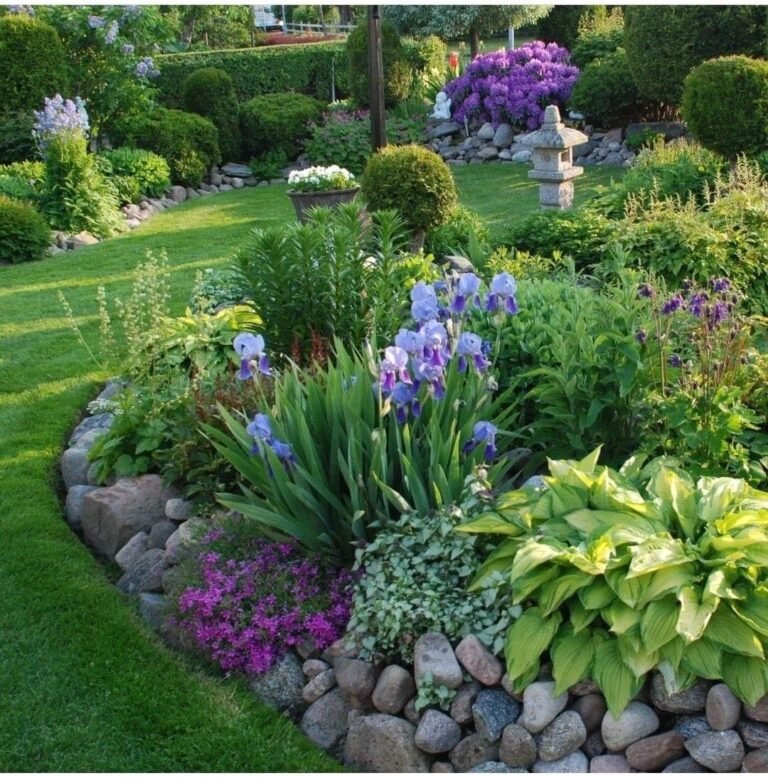20 Herbs, Vegetables & Plants You Can Grow In Water

Hydroponics is a cool way to grow plants, herbs, and vegetables without dirt. Plants get food from special water, and they grow faster and bigger. It’s fun to try, whether you love gardening or just want fresh food at home.
But which herbs, and vegetables are great to grow in water? Great herbs for water growing: basil, mint, oregano, cilantro. If you want vegetables, look for – lettuce, spinach, watercress, and bok choy. These plants thrive in hydroponic systems or water-based setups, requiring minimal space and maintenance.
The list will be about 20 plants in this article. Let’s get into the world of plants that you can grow in water. Keep on reading.
20 Plants You Can Grow in Water (Especially Herbs And Veggies)
Here are 20 plant ideas I suggest for you to grow in winter. I’ll be mostly talking about vegetables and herbs. It will be of some nutritional benefits as well.
1. Basil
How to Grow? Cut a 4-inch stem from a basil plant just below a leaf node. Remove the lower leaves and place the stem in a jar of water, ensuring the leaves aren’t submerged. Keep it in a sunny spot and change the water every few days.

Why It’s a Good Choice? Basil grows quickly, providing a steady supply of fresh leaves for cooking. It’s perfect for adding flavor to pasta, salads, and more.
2. Green Onions (Scallions)
How to Grow? Place the white roots of green onions in a glass of water, with just enough water to cover the roots. Put the glass in a sunny spot and change the water every few days.

Why It’s a Good Choice? Green onions are super easy to grow and regenerate quickly. They’re great for garnishing dishes and adding a mild onion flavor to various recipes.
3. Mint
How to Grow? Take a 4-6 inch cutting from a mint plant. Remove the lower leaves and place the stem in a glass of water. Keep it in a sunny location and change the water every 3-4 days.

Why It’s a Good Choice? Mint is resilient and spreads quickly. It’s perfect for making teas, and mojitos, and adding a refreshing taste to desserts and salads.
4. Romaine Lettuce
How to Grow? Save the bottom part of a romaine lettuce head (about 2 inches). Place it in a bowl with a small amount of water, ensuring the base is submerged. Place the bowl in a sunny spot and change the water every couple of days.

Why It’s a Good Choice? You can regrow leaves multiple times from the same base. It’s a great way to have fresh lettuce for salads without needing a full garden.
5. Garlic
How to Grow? Take a few garlic cloves and place them in a shallow dish with just enough water to cover the bottom. Keep the dish in a sunny spot and change the water every few days.

Why It’s a Good Choice? Garlic greens can be used like chives for a milder garlic flavor in dishes. Plus, growing garlic in water is super easy and requires minimal effort.
6. Celery
How to Grow? Cut the base off a celery bunch (about 2 inches) and place it in a bowl with a small amount of water. Put the bowl in a sunny spot and change the water every few days.

Why It’s a Good Choice? Celery regenerates quickly and can be used in soups, salads, and as a crunchy snack. It’s an excellent way to reduce food waste.
7. Rosemary
How to Grow? Take a 4-6 inch cutting from a rosemary plant. Strip the leaves off the lower half and place the cutting in a glass of water. Keep it in a sunny location and change the water every few days.

Why It’s a Good Choice? Rosemary is a hardy herb that adds a delightful aroma and flavor to meats, potatoes, and other dishes. It’s also known for its health benefits.
8. Thyme
How to Grow? Take a 4-inch cutting from a thyme plant. Remove the lower leaves and place the cutting in a glass of water. Keep it in a sunny spot and change the water every few days.

Why It’s a Good Choice? Thyme is a versatile herb used in a variety of recipes, from soups to roasts. It’s easy to grow and maintain in water.
9. Lemon Balm
How to Grow? Take a 4-6 inch cutting from a lemon balm plant. Remove the lower leaves and place the stem in a glass of water. Keep it in a sunny spot and change the water every few days.

Why It’s a Good Choice? Lemon balm has a pleasant lemon scent and flavor, making it great for teas and desserts. It’s also known for its calming effects.
10. Oregano
How to Grow? Take a 4-6 inch cutting from an oregano plant. Strip the leaves from the lower part and place the stem in a glass of water. Keep it in a sunny location and change the water every few days.

Why It’s a Good Choice? Oregano is a staple in Italian and Greek cuisine, adding a robust flavor to sauces, pizzas, and more. It’s easy to grow and maintain indoors.
11. Parsley
How to Grow? Take a 4-6 inch cutting from a parsley plant. Place the cutting in a glass of water, ensuring the leaves are above the waterline. Keep it in a sunny spot and change the water every few days.

Why It’s a Good Choice? Parsley is a versatile herb used in a variety of dishes, from soups to salads. It’s rich in vitamins A and C and adds a fresh, vibrant flavor to your meals.
12. Cilantro
How to Grow? Cut a 4-6 inch stem from a cilantro plant. Place the stem in a glass of water and keep it in a bright, sunny location. Change the water every few days.

Why It’s a Good Choice? Cilantro is essential in many cuisines, especially Mexican and Asian dishes. It’s great for adding a burst of fresh flavor to salsas, salads, and more.
13. Sage
How to Grow? Take a 4-6 inch cutting from a sage plant. Remove the lower leaves and place the cutting in a glass of water. Keep it in a sunny spot and change the water regularly.

Why It’s a Good Choice? Sage has a strong, earthy flavor that complements meats and stews. It’s also known for its medicinal properties, including anti-inflammatory benefits.
14. Stevia
How to Grow? Take a 6-inch cutting from a stevia plant. Remove the lower leaves and place the stem in a glass of water. Keep it in a sunny location and change the water every few days.

Why It’s a Good Choice? Stevia is a natural sweetener that’s much sweeter than sugar but without the calories. It’s perfect for adding sweetness to drinks and desserts.
15. Beet Greens
How to Grow? Cut the tops off beets, leaving about 1 inch of beet attached to the greens. Place the beet tops in a shallow dish of water. Keep the dish in a sunny spot and change the water every few days.

Why It’s a Good Choice? Beet greens are nutritious and can be used in salads, smoothies, or sautéed dishes. They are rich in vitamins A, C, and K, and add a mild, earthy flavor.
16. Lemongrass
How to Grow? Place the bottom part of the lemongrass stalks in a glass of water, ensuring the base is submerged. Keep it in a sunny spot and change the water every few days.

Why It’s a Good Choice? Lemongrass adds a citrusy flavor to dishes, especially in Thai and Vietnamese cuisines. It’s also known for its anti-inflammatory and antioxidant properties.
17. Fennel
How to Grow? Save the base of a fennel bulb (about 1-2 inches) and place it in a bowl with a small amount of water. Keep the bowl in a sunny spot and change the water every few days.

Why It’s a Good Choice? Fennel has a unique, licorice-like flavor that’s great in salads and as a seasoning for fish and meats. It’s also good for digestion and has antioxidant properties.
18. Carrot Tops
How to Grow? Cut the tops off carrots, leaving about 1 inch of carrot attached to the greens. Place the carrot tops in a shallow dish of water. Keep the dish in a sunny spot and change the water regularly.

Why It’s a Good Choice? Carrot tops can be used to make pesto or added to soups and salads. They are a good source of vitamins and minerals, and growing them reduces food waste.
19. Chives
How to Grow? Cut a bunch of chives and place the cut ends in a glass of water. Keep the glass in a sunny location and change the water every few days.

Why It’s a Good Choice? Chives are easy to grow and add a mild onion flavor to dishes. They’re great for garnishing and are rich in vitamins A and C.
20. Lettuce
How to Grow? Save the bottom part of a lettuce head (about 2 inches) and place it in a bowl with a small amount of water. Put the bowl in a sunny spot and change the water every few days.

Why It’s a Good Choice? Lettuce is easy to regrow and provides fresh greens for salads and sandwiches. It’s a good source of fiber and vitamins A and K.
Conclusion
Growing herbs and vegetables in water is a fantastic way to enjoy fresh, homegrown produce year-round. With a little patience and care, you can successfully cultivate a variety of delicious and nutritious plants right on your kitchen windowsill.
From the aromatic basil and versatile mint to the crunchy celery and flavorful garlic, the possibilities are endless. Experiment with different plants and find your favorites. Remember to provide adequate sunlight, fresh water, and a suitable growing environment for optimal results.
Growing your food with hydroponics is great! You’ll get to enjoy fresh, tasty veggies and help the environment too.






